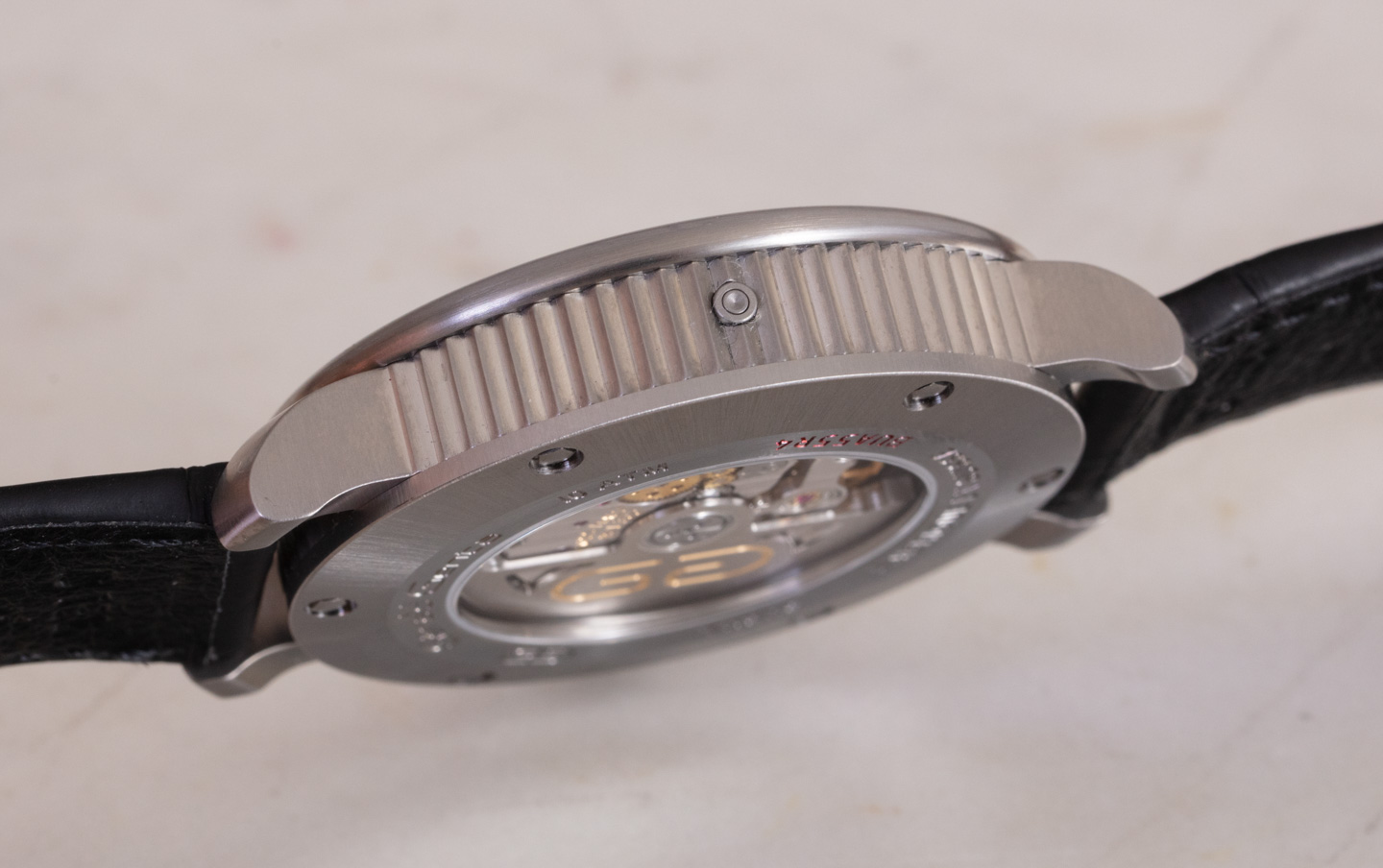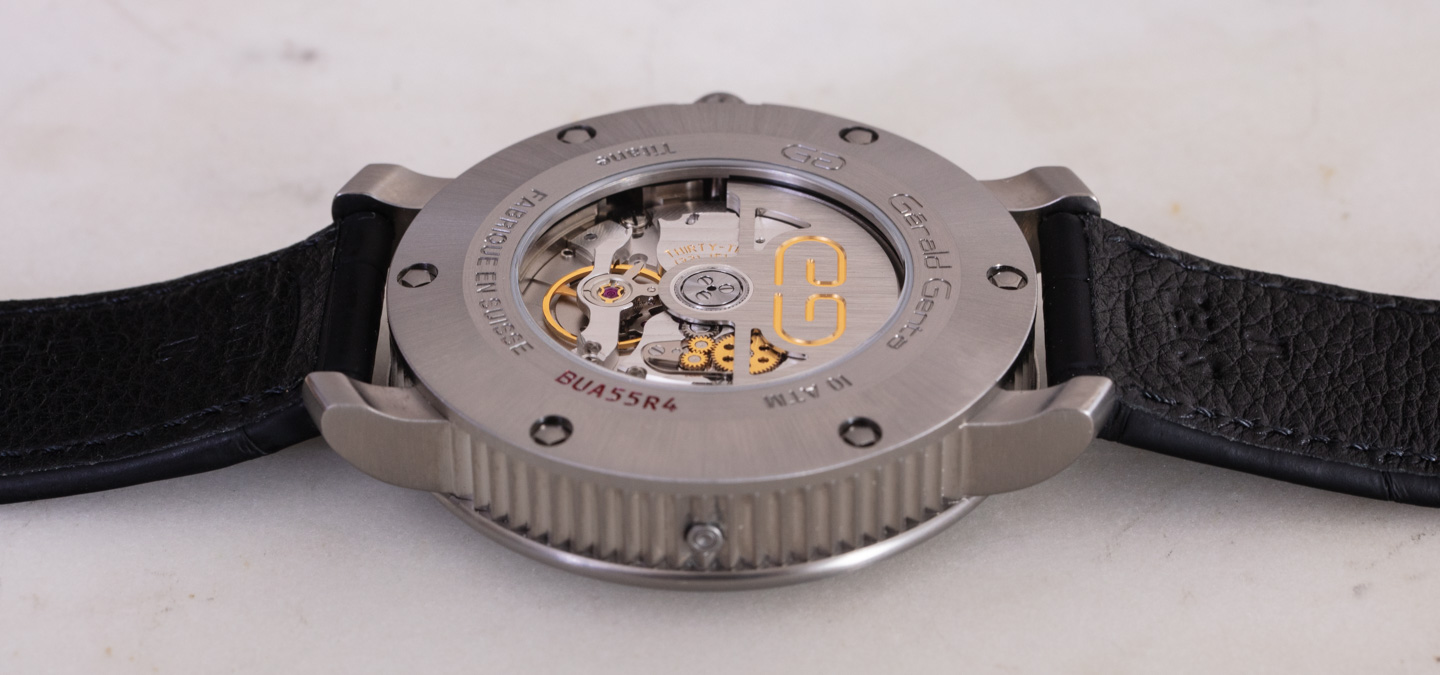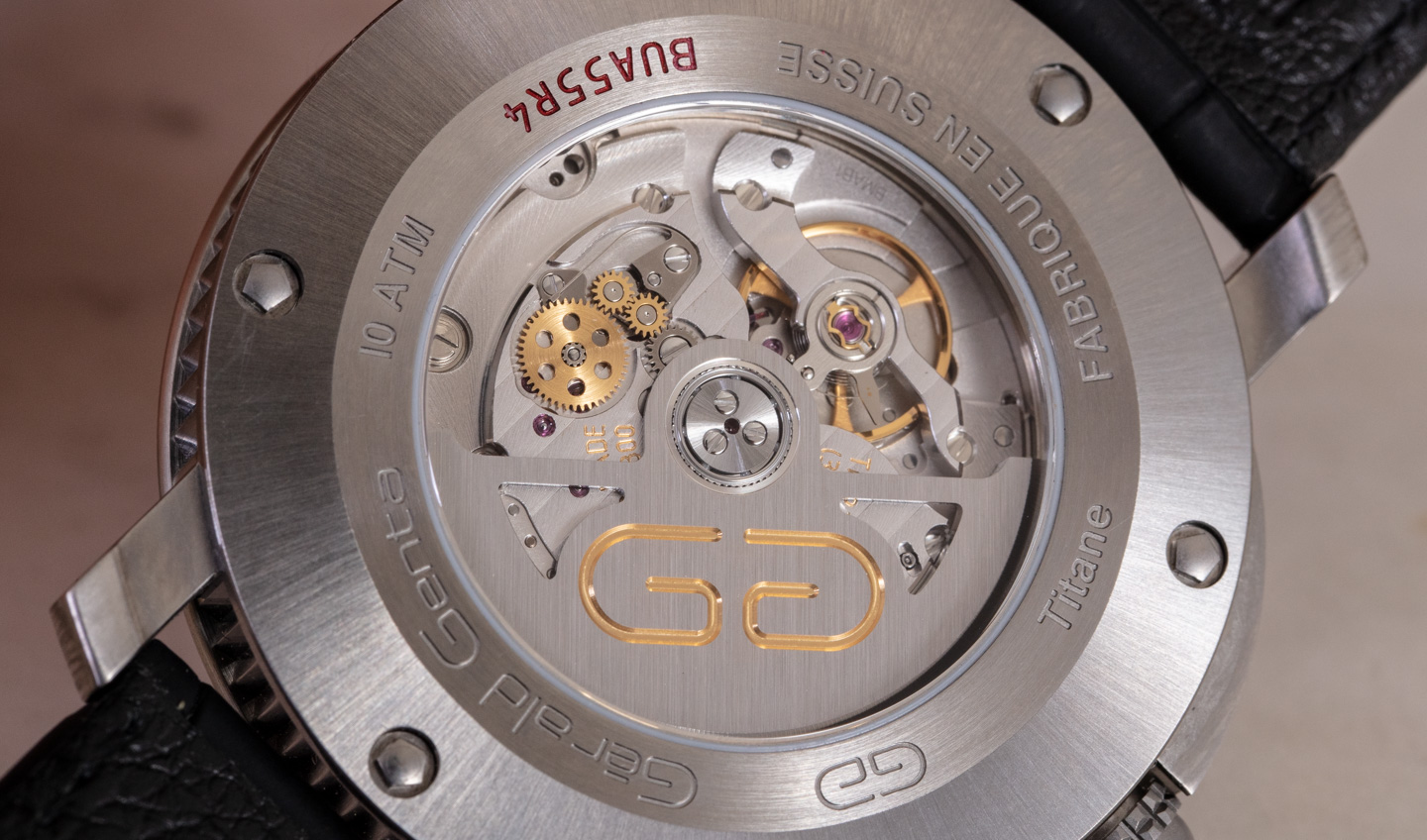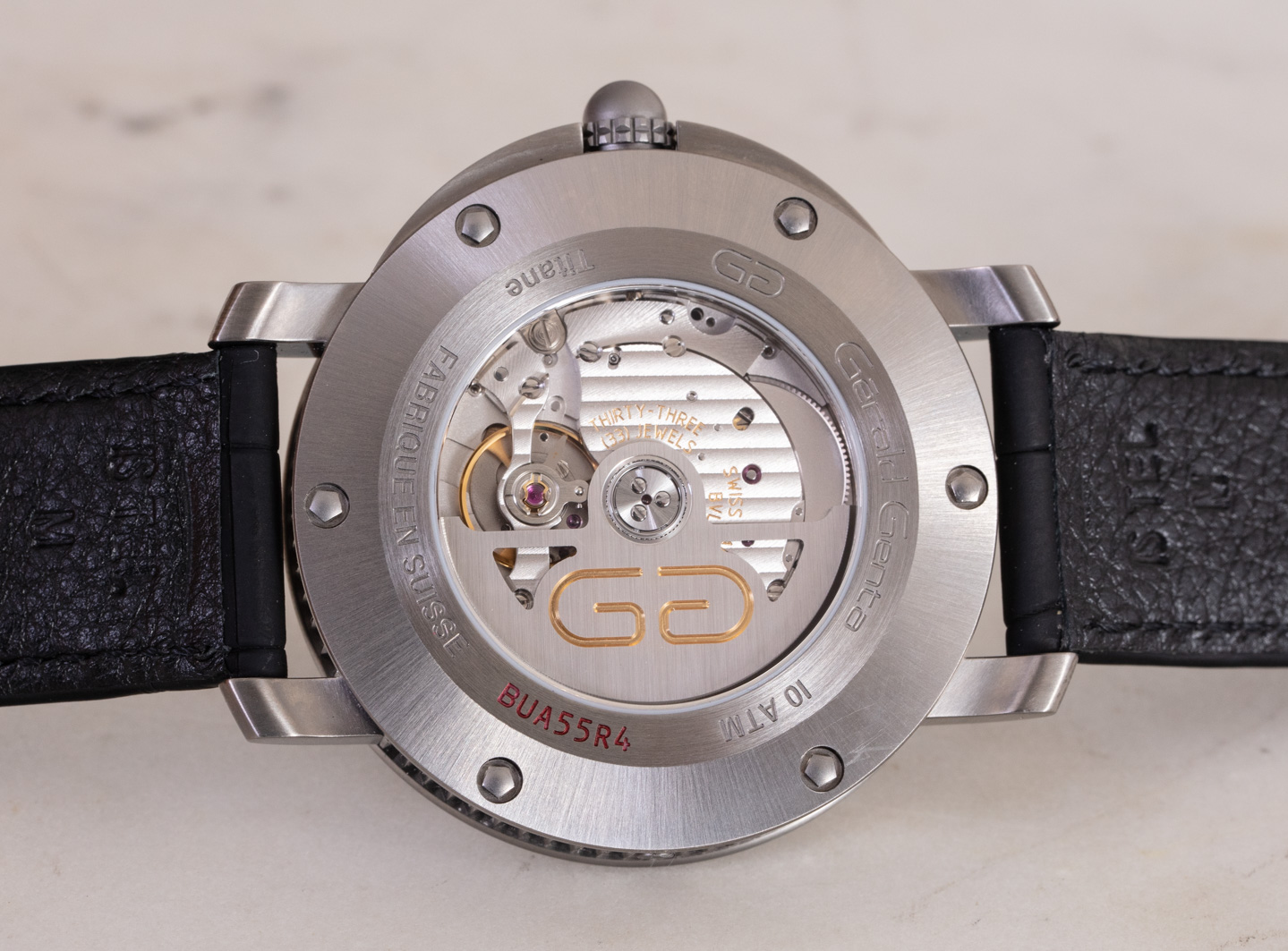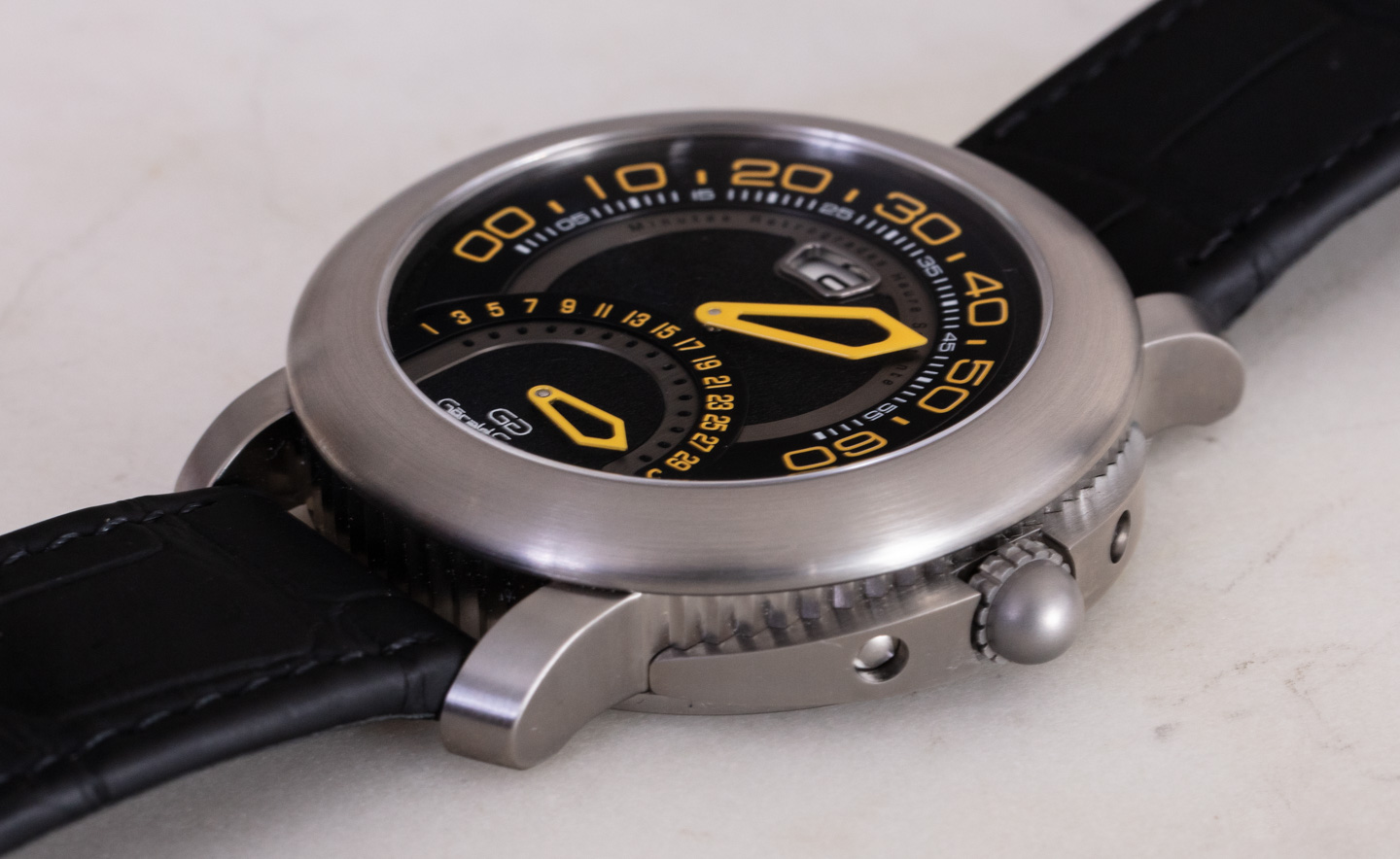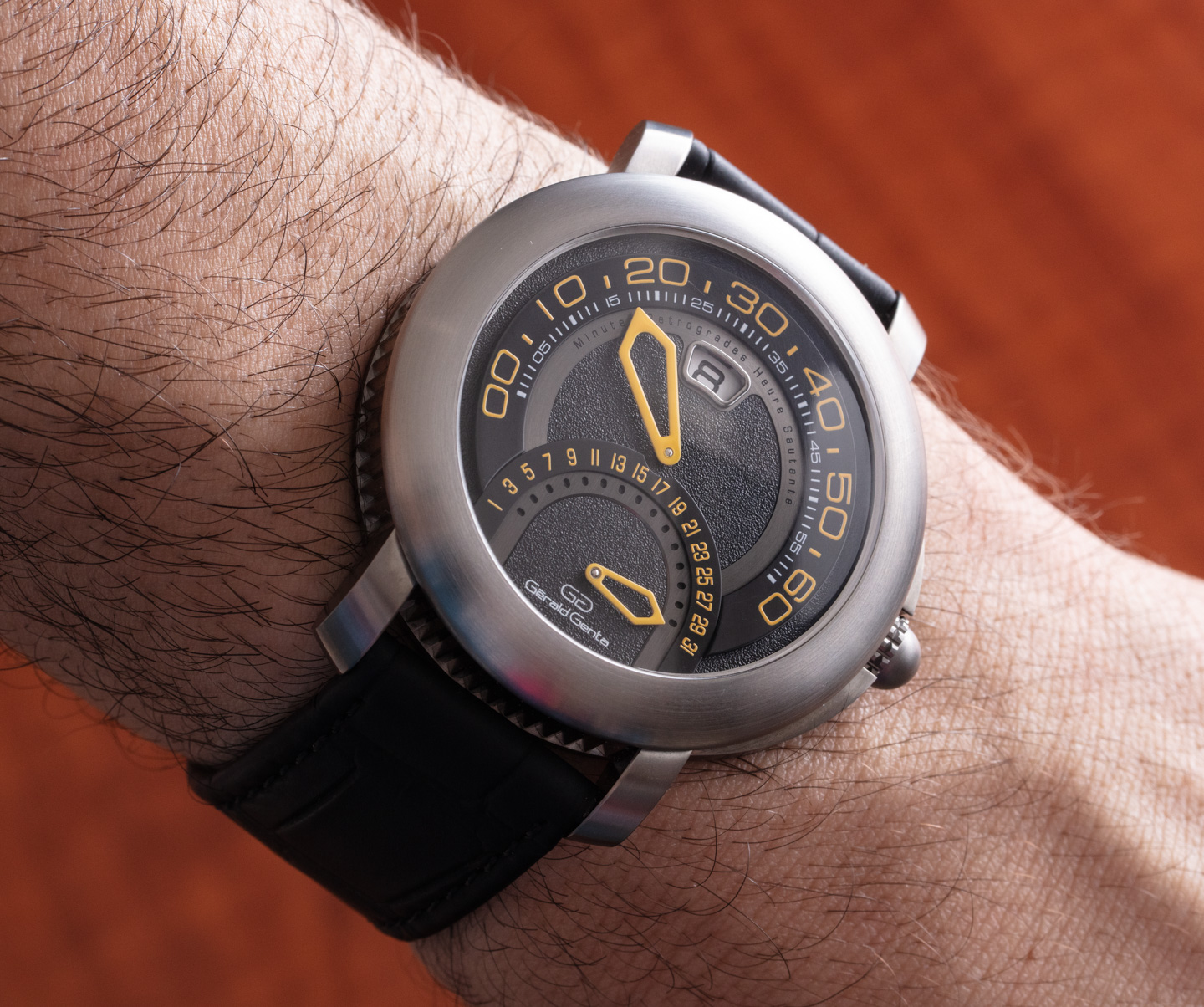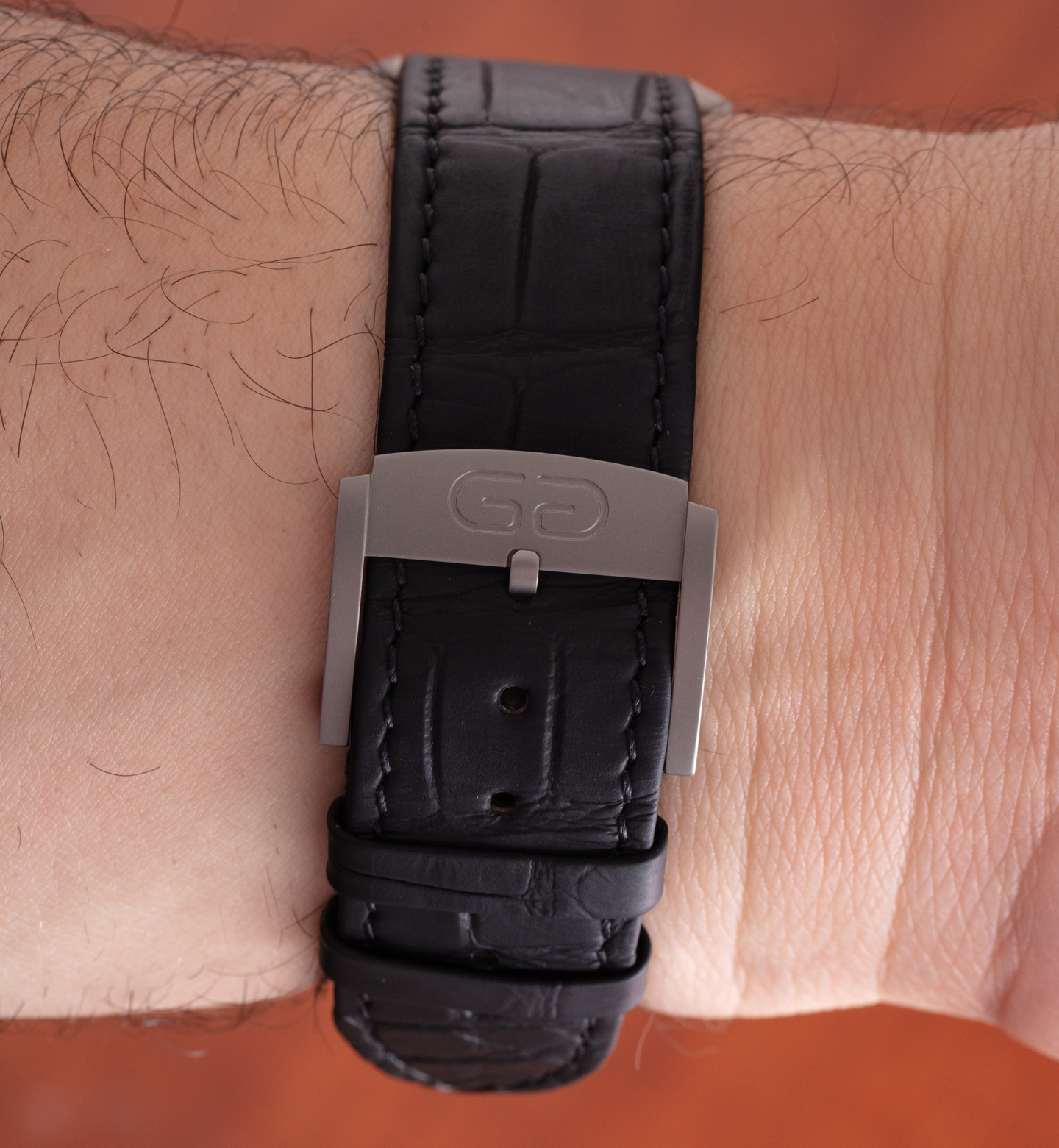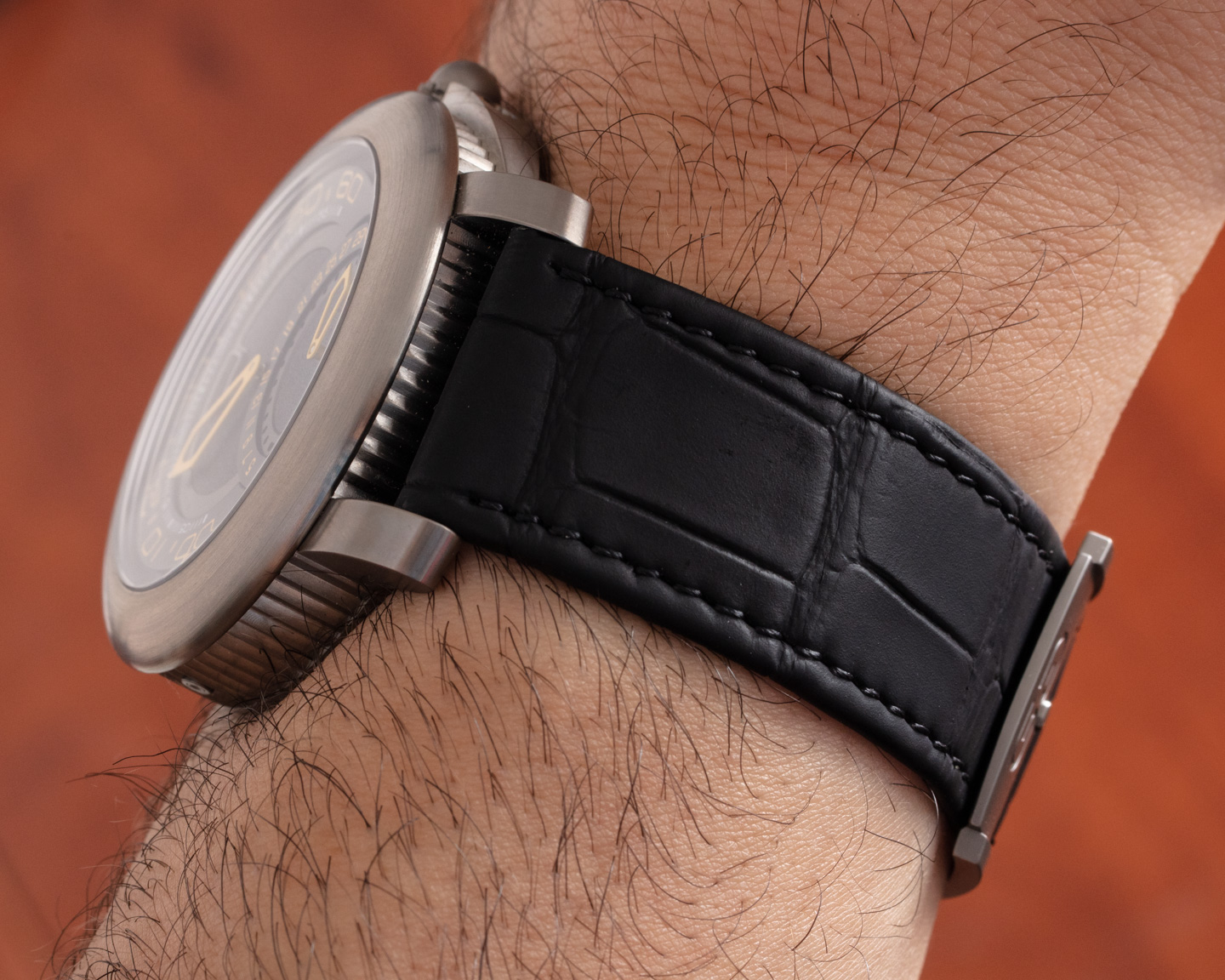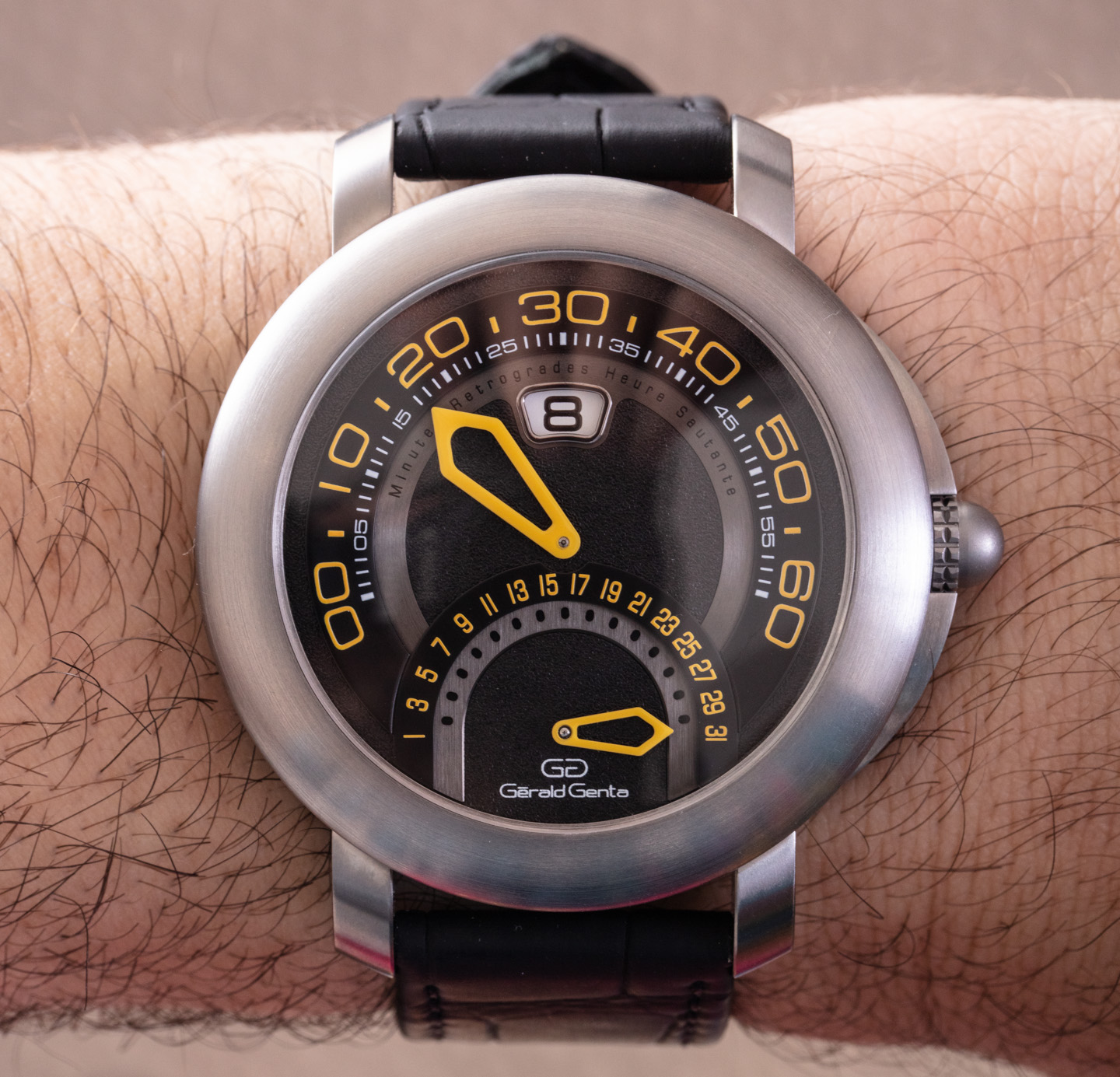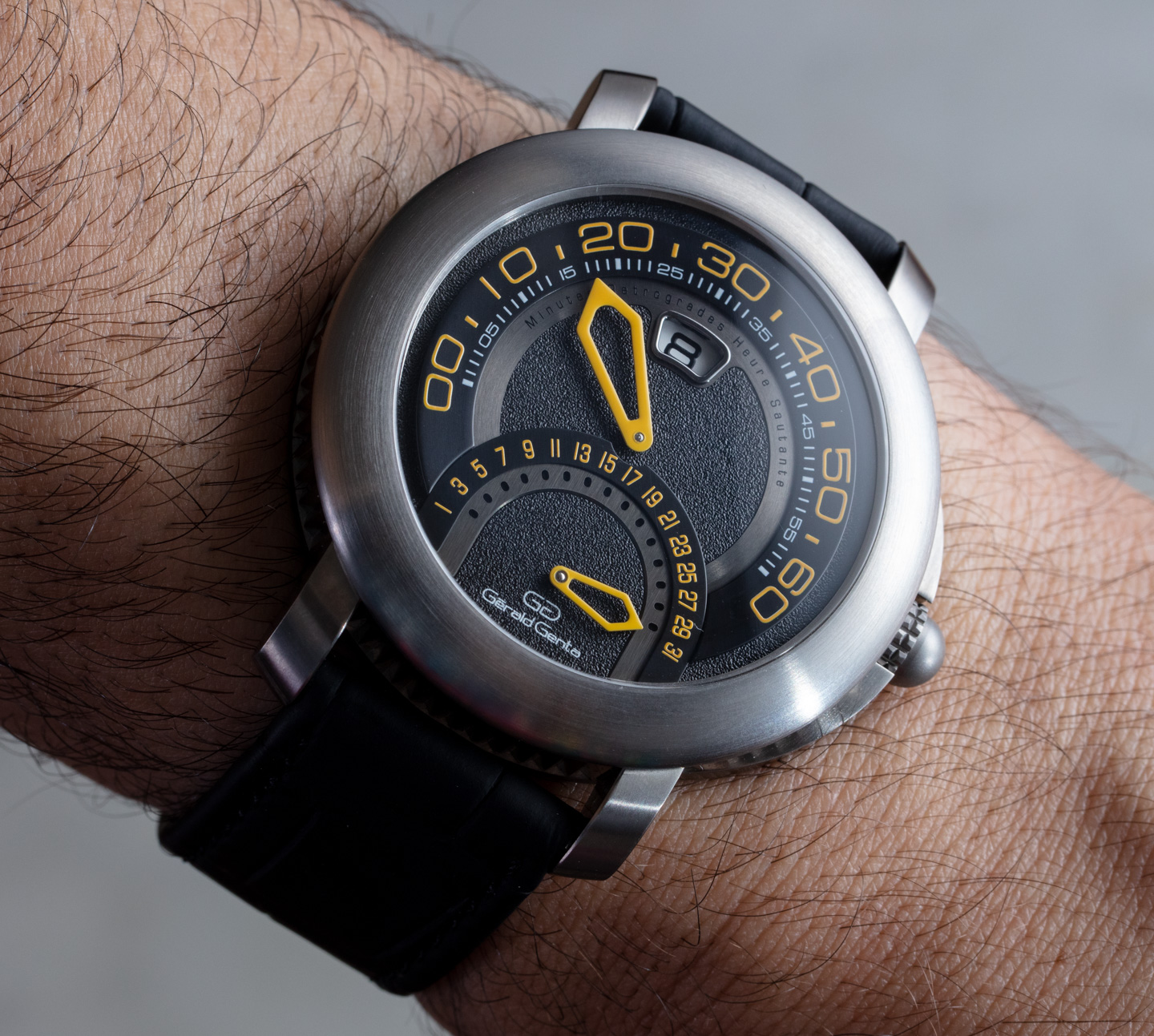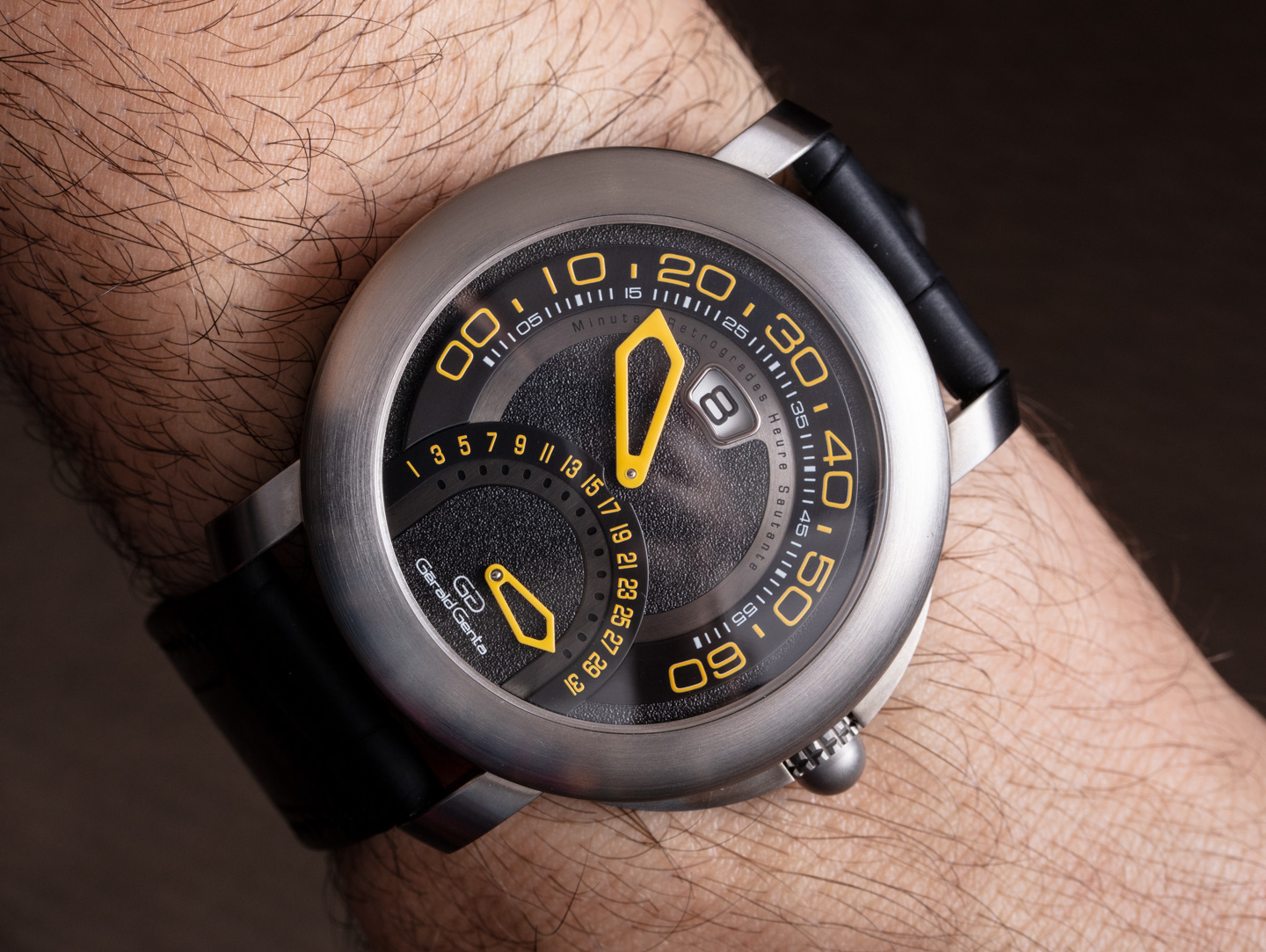
The return of the Gerald Genta brand had been rumored for a while before the wristwatch community got word of its resurrection in 2019 with a platinum-cased version of this particular Arena Bi-Retro watch (with a simpler blue dial). Almost exactly one year ago (as of this writing), LVMH’s BVLGARI (which acquired the Gerald Genta brand and name in the year 2000) announced the debut of this particular titanium-cased version of the watch known as the Gerald Genta Arena Bi-Retro Sport. In that product debut article, I discuss the backstory of the Gerald Genta brand and some of the current context of excitement around Gerald Genta designs. Today, I go hands-on with the reference 103448 Gerald Genta Arena Bi-Retro Sport watch.
Even though the Arena Bi-Retro Sport watch was debuted a year ago, it is still not listed as being for sale on the BVLGARI website (as of now I do not believe there is a dedicated Gerald Genta brand website), but rather as “coming soon.” The pandemic has made already long lead times for wristwatch production longer, and wait times for novel products even after their release can clearly take (as is the case in this instance) over a year to reach the market. I think the wait is actually worth it. Even though the Arena Bi-Retro Sport watch is hardly a bargain given its nearly $15,000 price, it is an exceptionally well-executed timepiece that everyone I have shows it to really likes.
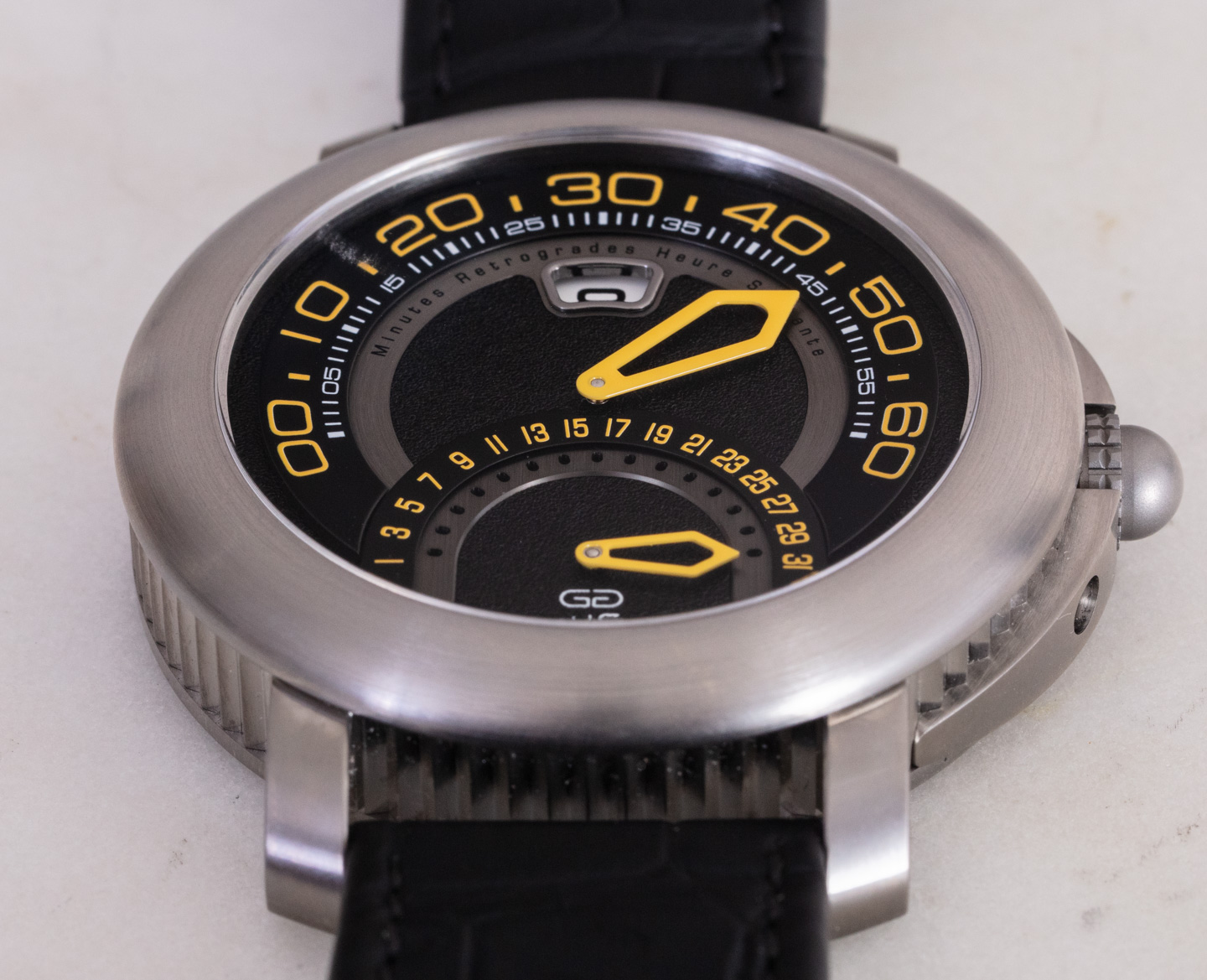
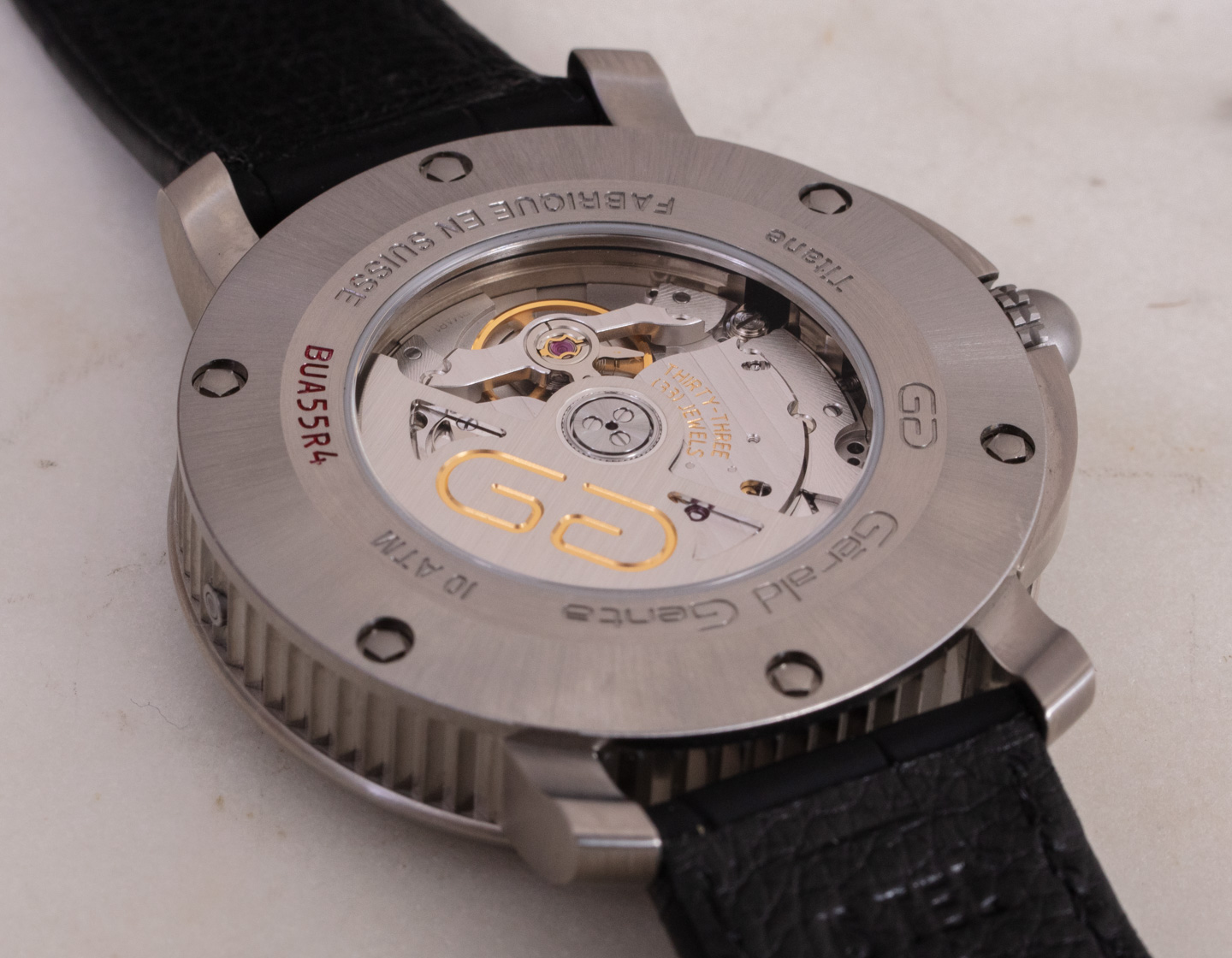
Highlights include an extremely comfortable and meticulously detailed grade 5 titanium case, an eye-catching retrograde minutes/jumping hours automatic movement, and also the spirited-looking dial that combines excellent textures with impressive legibility. In all, I think people who actually end up putting on this watch design on their wrist will find it hard to remove — even if they were lukewarm about it, to begin with.
The Arena Bi-Retro watch was the first, or among the first, retrograde watch of its type. Retrograde indicators are those that instead of making full circular revolutions, follow a set track and then have hands that spring back to a starting position when they reach the end of that track. At the time when Gerald Genta (who has been deceased for a number of years now) started his eponymous brand, he was going for ultra exotic stuff and was clearly ahead of his time from a design and complexity perspective. Watches like the Gerald Genta Arena, Octo, and Gefica from the 1990s were popular with some crowds, but like many other “out there” luxury brands, failed to his much of a stride with the mainstream. It took two decades or more until some of his work and that of the other Gerald Genta brand designers has started to get some of the credit it deserves. And in the context of some of the brand’s creations, the Arena was relatively tame by comparison.
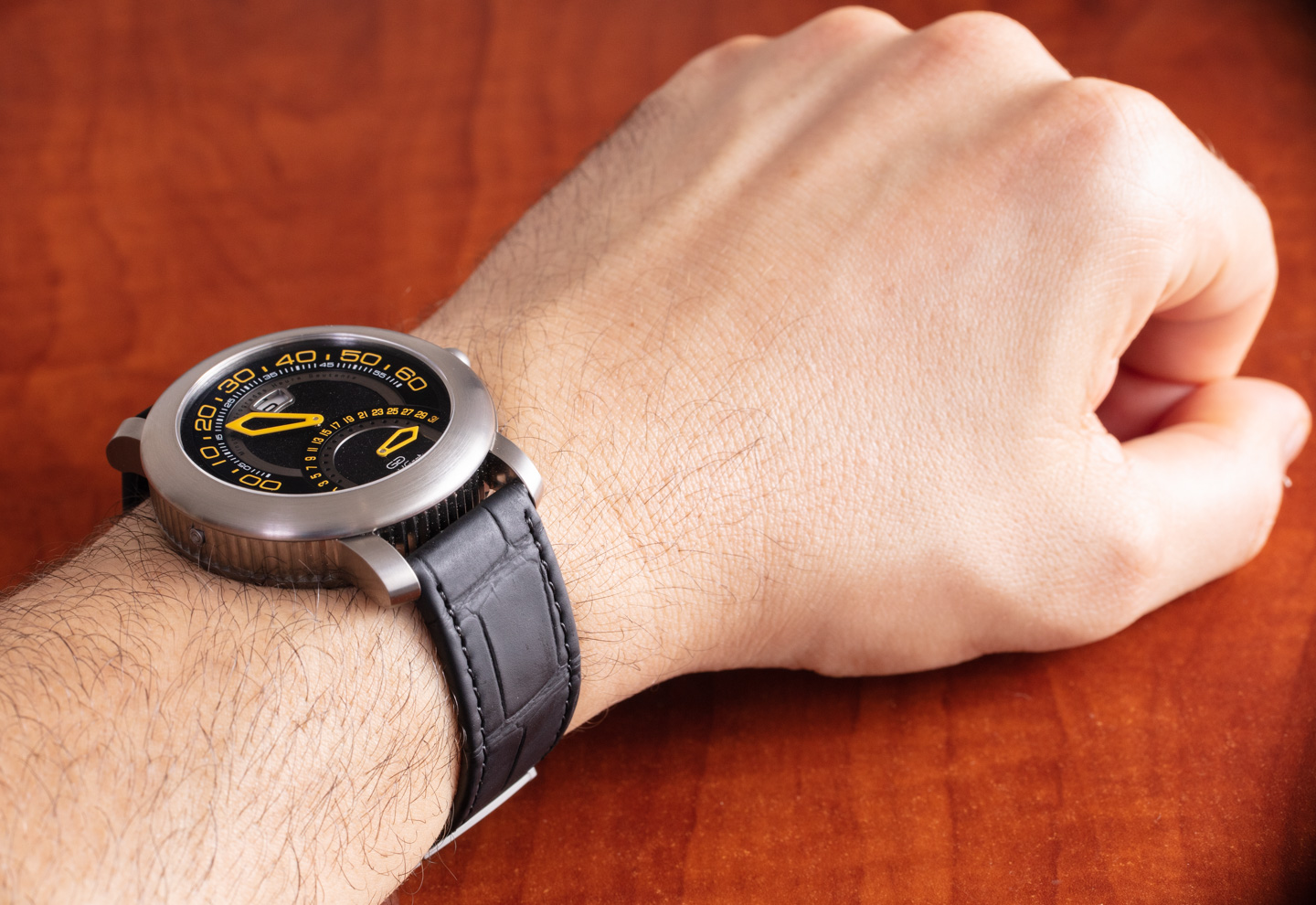
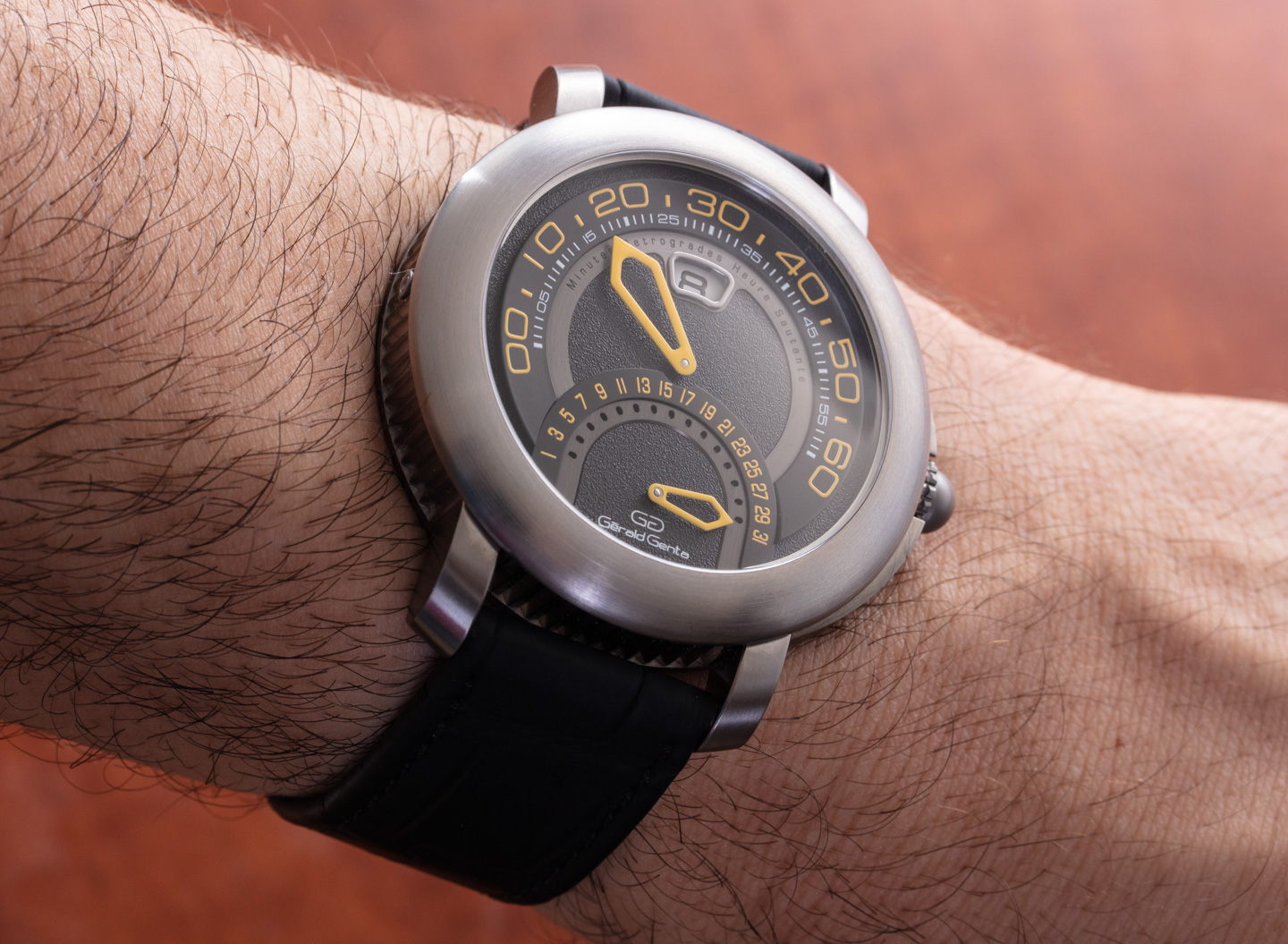
BVLGARI has already made one of the most iconic Gerald Genta designs into a staple of the brand with the Octo (which has taken on numerous new forms with BVLGARI branding on the dial). Now, the Arena Bi-Retro will clearly be positioned minus BVLGARI branding and with a novel version of the original Gerald Genta logo. Does it feel more BVLGARI or Gerald Genta? That is actually a good question because, at least for now, these watches are openly produced by BVLGARI and sold through BVLGARI distribution channels. I’d actually say the watch feels different from other BVLGARI products. Clearly, it is produced in the same high-quality manner, but rather than a dash of Italian fashion sense, the Arena Bi-Retro Sport feels less as though it is trying to go for mainstream luxury appeal and is clearly about mixing haute design with a competent wrist instrument experience (i.e., a bit more Swiss in execution).
Don’t let the “sport” part of the name confuse you. This watch is lightweight and legible, but aside from that, I wouldn’t recommend you beat it up too much. The 43mm-wide (about 11mm-thick and with a roughly 52mm lug-to-lug distance) titanium case is water-resistant to 100 meters and has a slightly domed and AR-coated sapphire crystal over the dial (and another over the movement). That is durable, but recall that titanium is a sensitive metal and is prone to scratching. That type of wear and tear wouldn’t look too lovely on the gorgeous polished and brushed surfaces of this timepiece. I especially like the brushed and angled bezel, as well as the column-style detailing on the side of the case and the precision-cut lines of the crown guard structure.
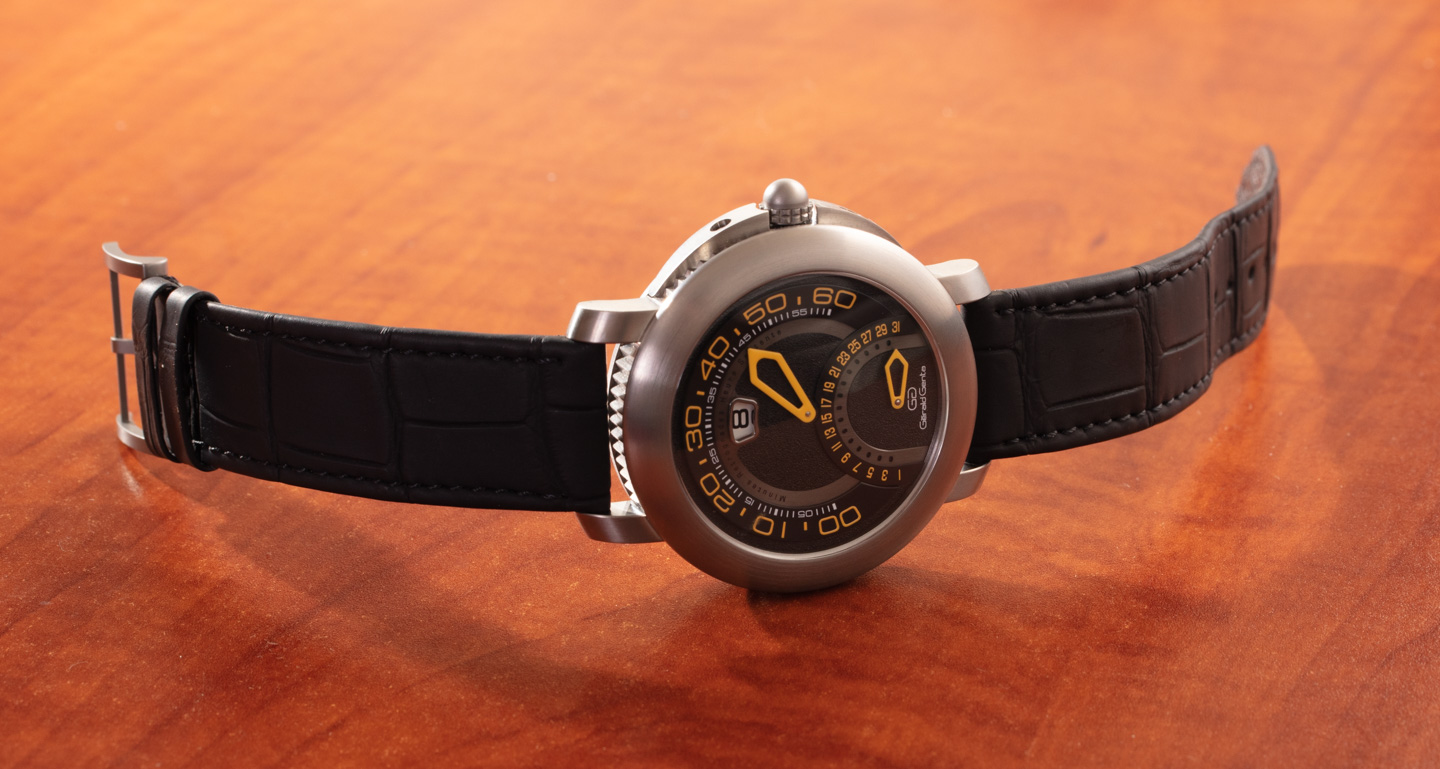
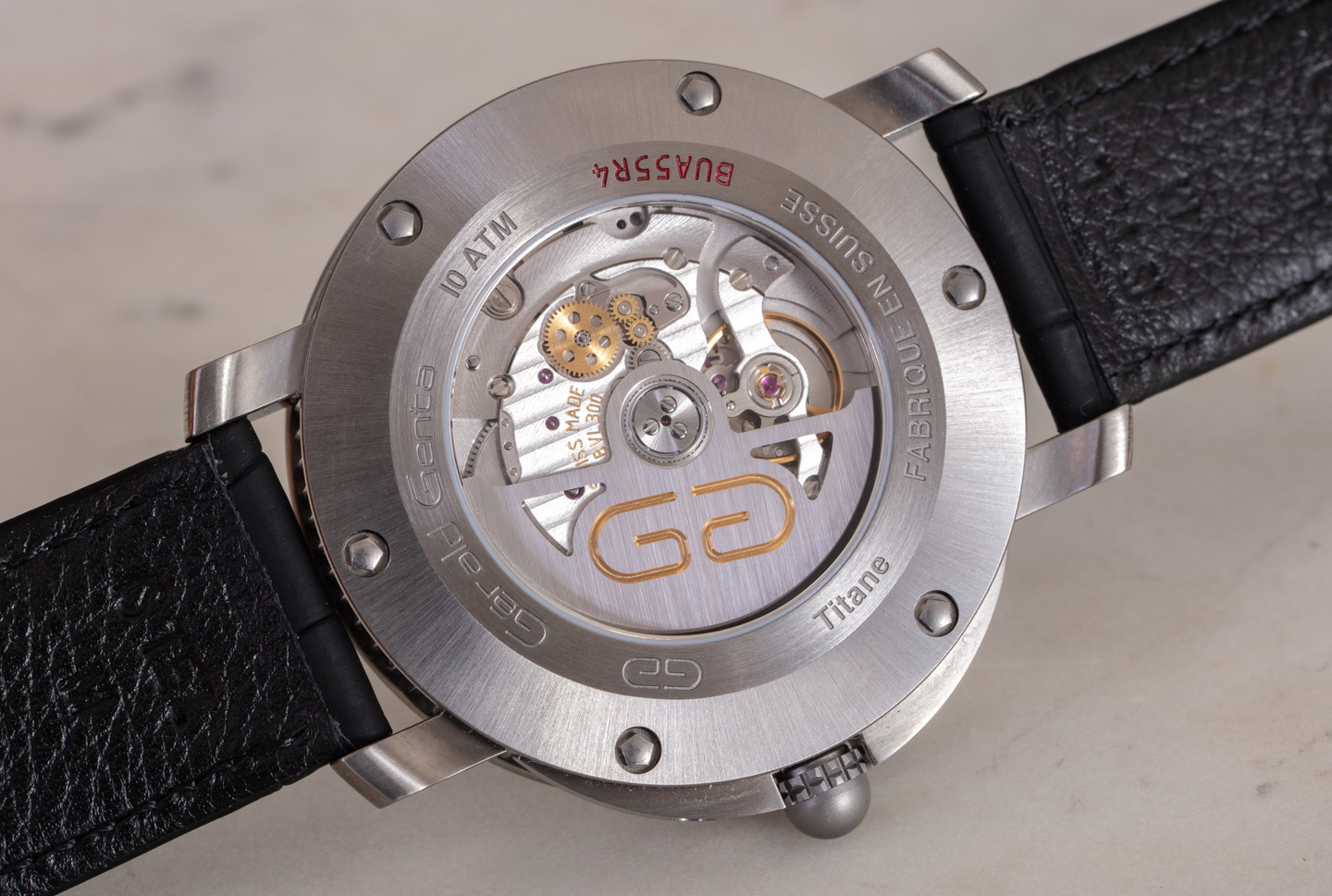
Everyone who puts the watch on their wrist comments about how comfortable it is, especially on the high-quality matte-black alligator strap, which is relatively thin (despite being padded) and wraps easily around the wrist. Some watch brands would have ruined the wearing comfort by including a bulky strap deployant clasp system. Thankfully, BVLGARI’s designers had the good sense to realize that a traditional pin buckle is the most convenient and comfortable way to wear a timepiece like this. The watch also feels thinner than it is since the flat back wears very close to your wrist. The screw-down crown has a knurled section which makes it easy to unscrew, and the rounded and brushed head of the crown evokes the style of the case’s rounded bezel.
Many people found the platinum version of the Gerald Genta Arena Bi-Retro watch a bit boring when it came to the dial design. BVLGARI was experimenting with a more minimalized look which they adopted for the Octo watch series. I’m not sure that worked as well with the Arena Bi-Retro. With the reference 103448 Sport, BVLGARI evokes more of the classic Gerald Genta look which enthusiasts like, which includes playful shapes, bright colors, a serious focus on logical utility, and a sort of neo-Art Deco flair to it. Marketing pictures of the watch seem to suggest that the dial text is very prominent, but in reality the text on the inner metallic ring is rather out of the way and hardly a distraction. What you see most on this watch are the two yellow-colored hands, matching orange minute and date scales, and then the hour indicator window under 12 o’clock.
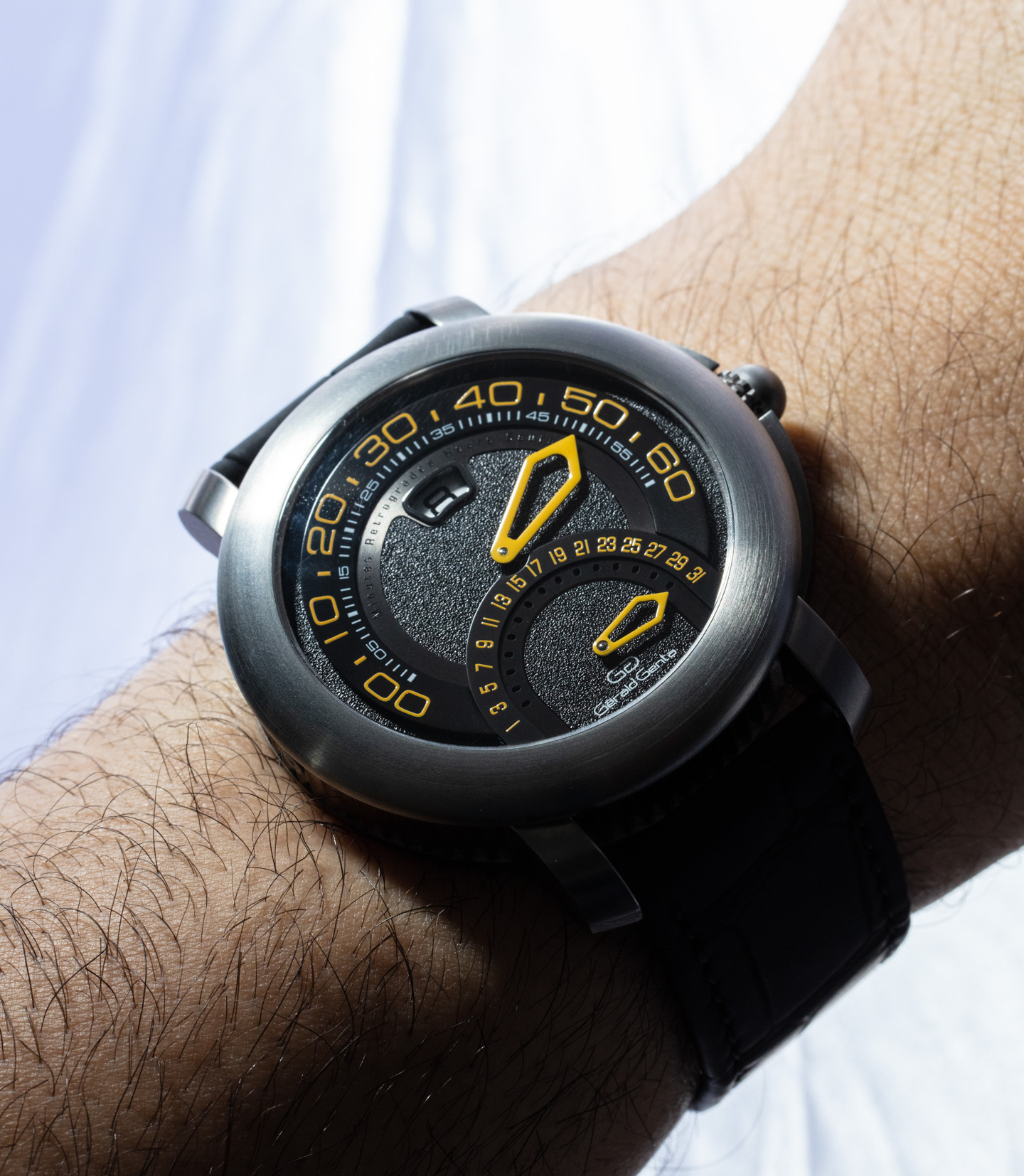
The symmetrical dial is interesting to look at and very easy to read once you get the hang of it. Nevertheless, wearers of an Arena Bi-Retro sport do get to confuse novices because most mainstream people have no idea what to do when first presented with a retrograde and/or jumping hour movement. The hour window itself is pleasant looking but I keep wondering to myself if it would look better in a yellow font against a dial-matching black disc. Indeed, the original Arena watches did look like this, but I do feel that the design would be even more elegant if the white disc and black hour text were created to be a bit more harmonic with the rest of the watch face’s color and texture composition.
Speaking of textures, the dial of the Arena Bi-Retro Sport is full of them includes brushes and frosted surfaces, along with the polished look of the yellow-hued lacquered hands. The dial and movement design also eschew a seconds indicator, which leaves the dial looking a bit more elegant — but is a missing bit of useful information. I actually think that BVLGARI might want to test a re-engineered version of the BVL 300 automatic movement which replaces the date indicator dial with a retrograde seconds indicator. Date complications are useful but hardly in demand from many people who would be interested in this watch. Would a retrograde seconds version be more appealing to timepiece collectors? I think it might. This does present one potential engineering challenge.
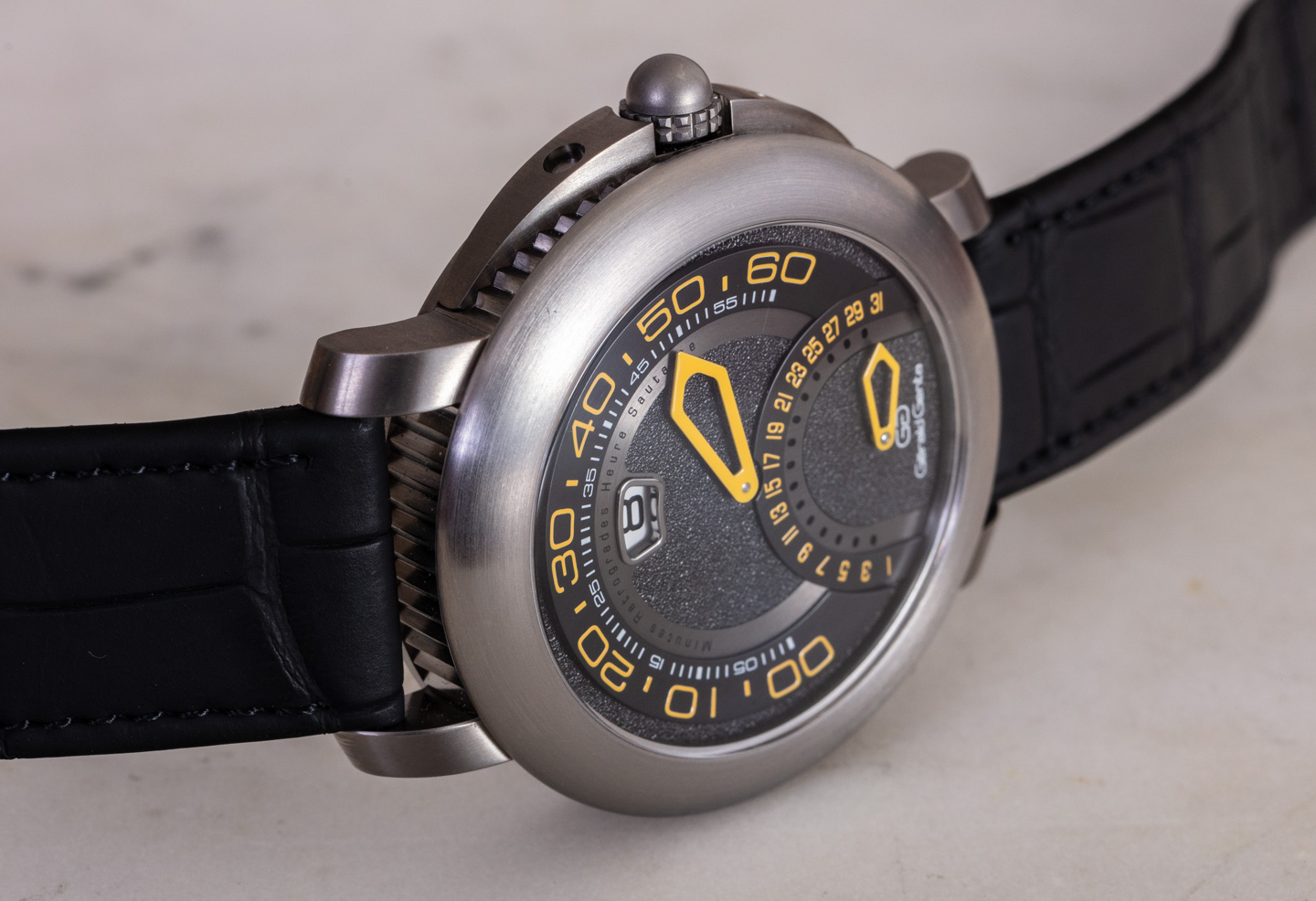
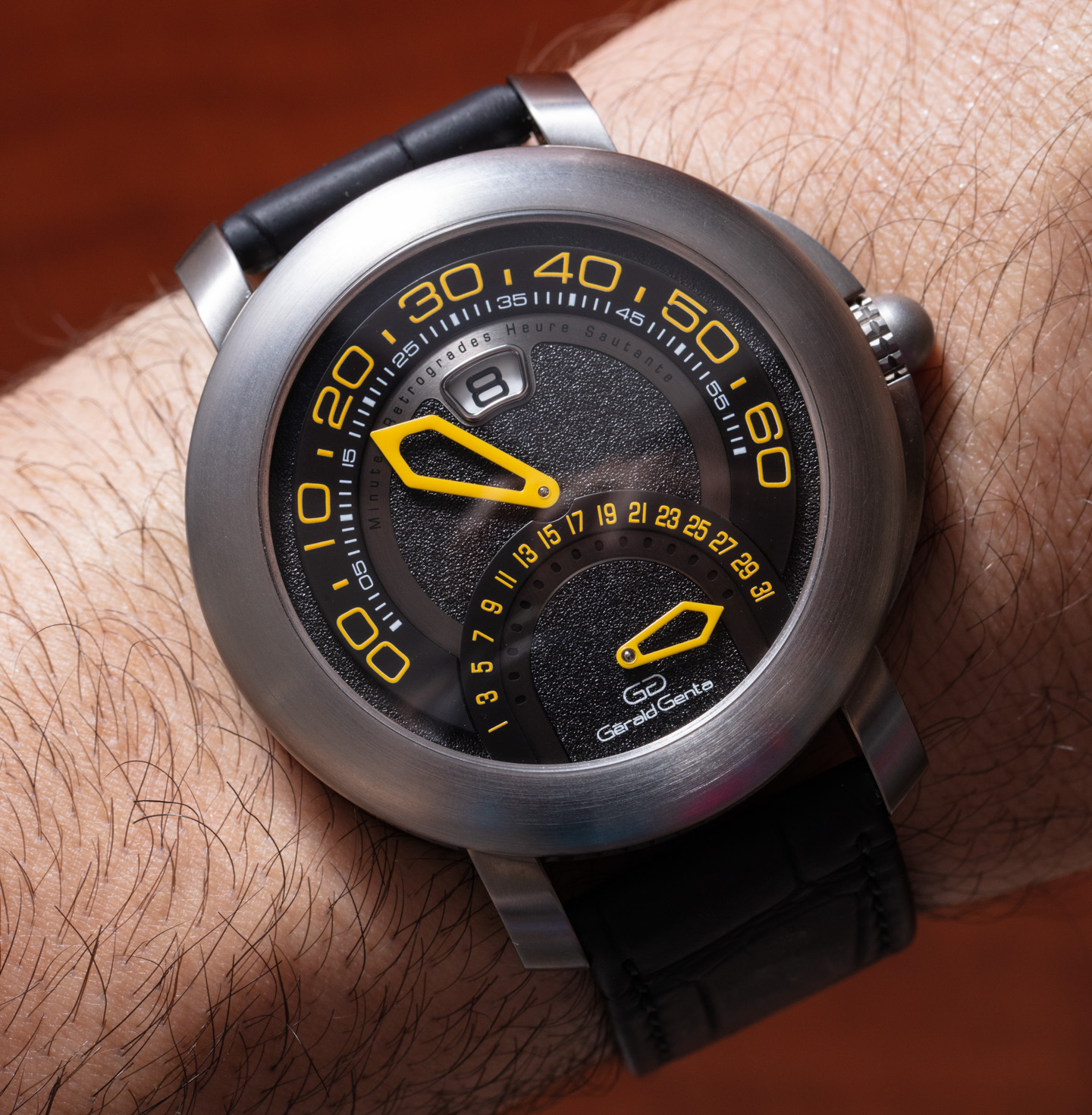
The reason there aren’t so many retrograde movements on the market (as I understand it) is because of how the constant reset of a retrograde hand can cause wear and tear, and thus require more frequent servicing. The issue is, namely, shock. The retrograde hand uses a spring to return it to its original position with immediacy. That return action needs some type of buffer when the hand returns to the start position, as otherwise there is a lot of shock on the relevant parts. A retrograde seconds hand would be subject to the most amount of wear and tear since it is being returned each minute. Compare that with the hand return frequency of a date hand (once a month versus nearly 1,500 times per day) and you can imagine how much longer between service intervals a difference like that makes. For now, BVLGARI watch movement engineers need only focus on the service intervals of the minute scale hand, which resets itself 24 times per day. I’d be interested to know what technologies or materials BVLGARI currently uses for the retrograde hand return system to ensure long-lasting operation.
The automatic movement itself is known as the BVL 300, and it is an attractive yet more or less efficient mechanism with a bi-directional winding automatic rotor operating at 4Hz with a power reserve of 42 hours. I like the mixture of industrial construction with elements of fine-watch finishing on the movement (such as the polished angles on some of the bridges. The date is adjusted using an in-set pusher on the side of the case and setting the time is a bit different from other watches. While you can adjust the minutes backward or forward, you can also advance the hours forward. That said, the crown advances the minute hand so fast, even if you need to cycle through a number of hours to adjust the time appropriately, the process should only take mere seconds. In all, I’d say it is a very user-friendly movement given some of the practical limitations of a dial retrograde and jumping hour display system.
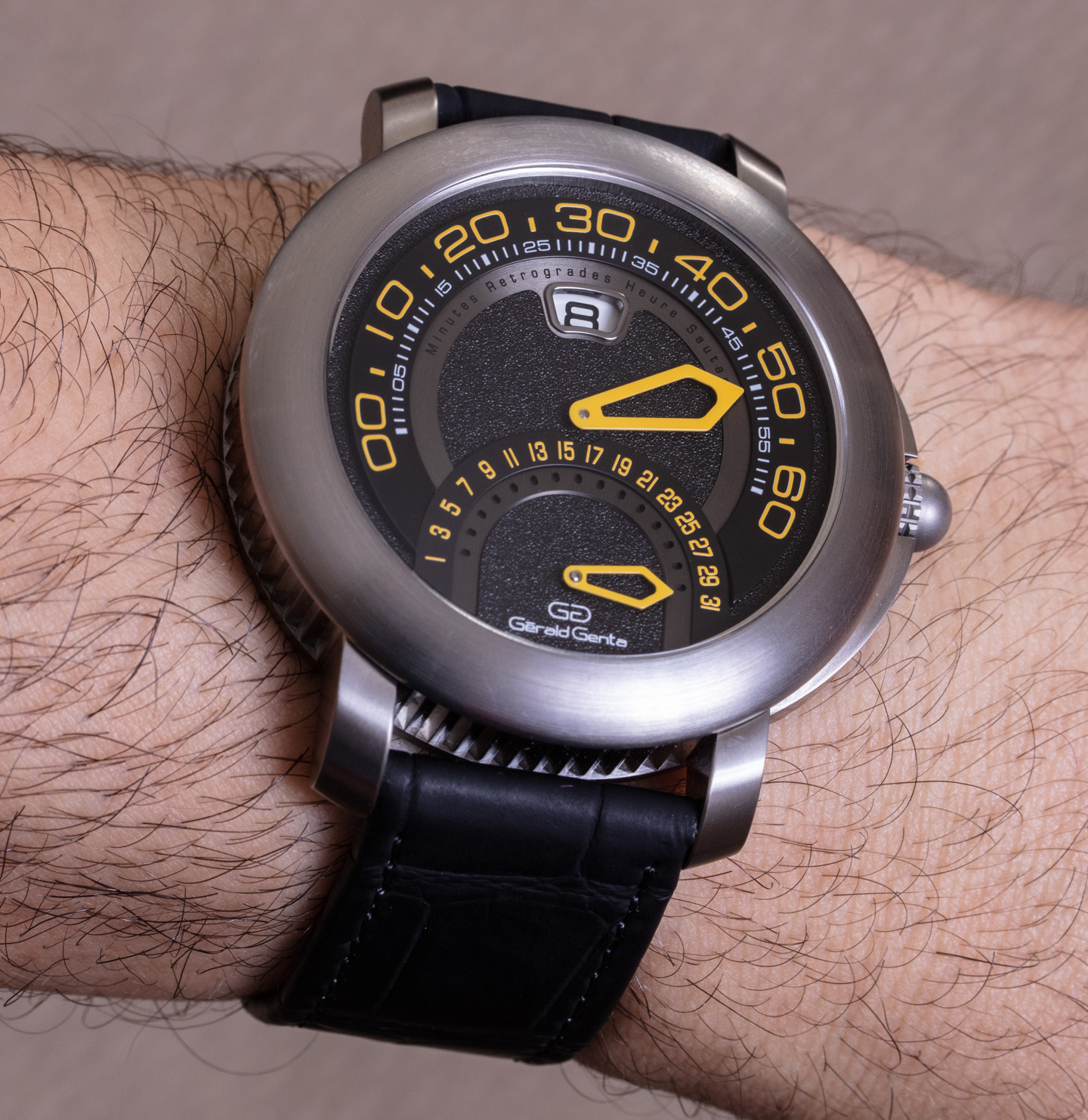
The Arena Bi-Retro by Gerald Genta is back, and I’m so happy that a new generation of watch lovers can experience what were relatively underappreciated Gerald Genta products when they first came out (he was ahead of his time, much of the time). The BVLGARI team has rendered these new versions with a lot of love, and I think enthusiasts will be able to tell. Given how uncommon retrograde minute/jumping hour watches are, the hobbyist community still doesn’t have a lot of existing demand for products like this. I encourage people to try one out because a timepiece like this will really delight and surprise you with its good looks, excellent construction, and chic personality mixed with real utility that makes for a solid daily wear.
BVLGARI has already confirmed that more Gerald Genta watch favorites are coming back, including additional variations of the Bi-Retro. What enthusiasts can next look forward to is a return of the Disney character dials (Mickey Mouse, Minnie Mouse, Donald Duck, and Goofy mainly), which I’ve always thought were amazingly cool. Originals are now very hard to get, and given the popularity of pop culture luxury products, I think BVLGARI will have an immediate sales hit with them. Returning to our black and yellow friend in titanium, the Gerald Genta reference 103448 Arena Bi-Retro Sport watch has a retail price of $14,800 USD. Learn more at the BVLGARI website here.
Necessary Data
>Brand: Gerald Genta (by BVLGARI)
>Model: Arena Bi-Retro Sport reference 103448
>Price: $14,800 USD
>Size: 43mm-wide, ~11mm-thick, and ~52mm lug-to-lug distance.
>When reviewer would personally wear it: As a comfortable and hip daily wear for high-end urban adventuring or for being around a design-focused professional audience.
>Friend we’d recommend it to first: Fans of well-made avant-garde timepieces who missed out on being able to own any of the original Gerald Genta Arena watches.
>Best characteristic of watch: Excellent mixture of strong points leading to a solid all-around timepiece. which is typically not the situation with more distinctive timepiece designs that often value form over function.
>Worst characteristic of watch: Price is expensive.

